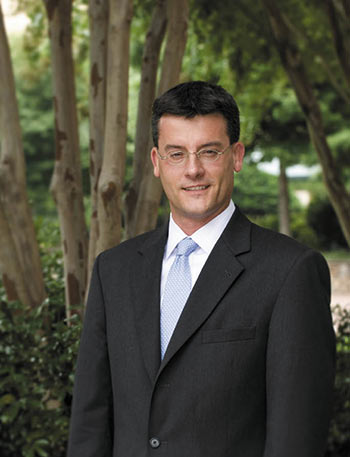 The U.S. Department of Energy rolled
out its Open Government Plan yesterday, pledging to be more
transparent about energy policy shifts and to better educate the market
about efficiency initiatives. A major part of the latter goal is
teaching people about the benefits and importance of the Smart Grid — a
concept that consumers and some utilities have yet to rally behind.
The U.S. Department of Energy rolled
out its Open Government Plan yesterday, pledging to be more
transparent about energy policy shifts and to better educate the market
about efficiency initiatives. A major part of the latter goal is
teaching people about the benefits and importance of the Smart Grid — a
concept that consumers and some utilities have yet to rally behind.
Tackling this challenge head on, Energy Secretary Steven Chu announced today that the department will be sinking almost $100 million into 54 different Smart Grid training programs across the country. Targeted at about 30,000 utility workers and electrical equipment manufacturers, these programs will also use $95 million from universities, utilities and industrial groups to design curricula around the modernization of today’s electrical grid.
As some of the oldest and largely unchanged companies in the U.S., utilities move notoriously slow when it comes to adopting new technologies and updating equipment in the field. Some substations and transistors have been in place for decades. One of the reasons for this is that the workforce is older and accustomed to established practices. This new investment in training employees is an attempt by the federal government to shake things up and accelerate change.

 I’ve [Matt Marshall] just wrapped up a visit of three cities — Boston, New York and Washington, D.C. — and saw significant startup action happening in each one of those cities.
I’ve [Matt Marshall] just wrapped up a visit of three cities — Boston, New York and Washington, D.C. — and saw significant startup action happening in each one of those cities.
 In most workplaces, there are three generations of workers. The first group we'll consider are the Traditionalists, those who were born some time before 1965. They are likely, at this stage of their careers, to be extremely influential and senior in their organizations. The name Traditionalists, though, is applied because this is a group which embodies the sets of values one most often sees amongst the "old school. They will, most likely, prefer to communicate through structured and rigid hierarchies, and will certainly prefer command-and-control mechanisms in the way they distribute tasks between themselves. As innovators, this group will normally prefer to solve problems they've been directed to examine, and will usually come up with solutions along trajectories which are well established by their organizations. This, naturally, makes them ideally suited to innovation teams which have elected to follow a Play-Not-2-Lose strategy, and whose primary focus is on incremental innovation.
In most workplaces, there are three generations of workers. The first group we'll consider are the Traditionalists, those who were born some time before 1965. They are likely, at this stage of their careers, to be extremely influential and senior in their organizations. The name Traditionalists, though, is applied because this is a group which embodies the sets of values one most often sees amongst the "old school. They will, most likely, prefer to communicate through structured and rigid hierarchies, and will certainly prefer command-and-control mechanisms in the way they distribute tasks between themselves. As innovators, this group will normally prefer to solve problems they've been directed to examine, and will usually come up with solutions along trajectories which are well established by their organizations. This, naturally, makes them ideally suited to innovation teams which have elected to follow a Play-Not-2-Lose strategy, and whose primary focus is on incremental innovation. Working RemotelyRemote working is a topic that’s been on my mind a lot lately. First, because of a project I’ve been working on with Microsoft to develop an e-book, “Work Without Walls,” that examines the best practices of small and midsized businesses with remote-working policies. A survey conducted by 7th Sense Research that we used in preparing the e-book had some interesting results.
Working RemotelyRemote working is a topic that’s been on my mind a lot lately. First, because of a project I’ve been working on with Microsoft to develop an e-book, “Work Without Walls,” that examines the best practices of small and midsized businesses with remote-working policies. A survey conducted by 7th Sense Research that we used in preparing the e-book had some interesting results.
 There's a great post on the Harvard Business Review blog called "Should Entrepreneurs Lie?"
There's a great post on the Harvard Business Review blog called "Should Entrepreneurs Lie?"

 This credit is based on a certificate issued by Finance Authority of Maine, which is equal to 40% of qualified investment (60%, if the investment is in a business located in a certain high- unemployment area). Limitations: the taxpayer can only take 25% of the credit in the year of the investment and 25% in each of the following three years. The amount of the credit taken in any one year cannot exceed 50% of the tax otherwise due. The credit cannot be carried back, but can be carried forward up to 15 years.
This credit is based on a certificate issued by Finance Authority of Maine, which is equal to 40% of qualified investment (60%, if the investment is in a business located in a certain high- unemployment area). Limitations: the taxpayer can only take 25% of the credit in the year of the investment and 25% in each of the following three years. The amount of the credit taken in any one year cannot exceed 50% of the tax otherwise due. The credit cannot be carried back, but can be carried forward up to 15 years.
 Some people act as if they know it all. In reality when people “act” like they know it all they are acting out a part in life they wish they had.
Some people act as if they know it all. In reality when people “act” like they know it all they are acting out a part in life they wish they had.
 There are no direct financial fruits from merely owning a patent. There are a lot of patents and products which are lying useless in federally funded universities and research laboratories across the country. A patent or product must be adopted, purchased or leased by a corporation for development.
There are no direct financial fruits from merely owning a patent. There are a lot of patents and products which are lying useless in federally funded universities and research laboratories across the country. A patent or product must be adopted, purchased or leased by a corporation for development.
